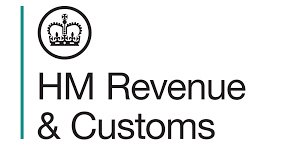HMRC SDLT: Guide to First-Time Buyers’ Relief: Conditions, Rates, and Definitions Explained
First-Time Buyers’ Relief Overview
This section provides guidance on the relief available for first-time buyers under the Stamp Duty Land Tax (SDLT) system. It outlines the conditions and definitions necessary to qualify for the relief, the applicable SDLT rates, and how various property transactions interact with the relief.
- Introduction to the relief for first-time buyers.
- Eligibility criteria and conditions for claiming the relief.
- SDLT rates applicable when relief is available.
- Definitions of a first-time buyer and a dwelling.
- Impact of linked transactions and shared ownership on the relief.
- Interaction with higher rates for additional dwellings and alternative finance arrangements.
- Guidance on claiming the relief.
“`

Read the original guidance here:
HMRC SDLT: Guide to First-Time Buyers’ Relief: Conditions, Rates, and Definitions Explained
Reliefs for First-Time Buyers
Introduction to First-Time Buyers’ Relief
First-Time Buyers’ relief is a scheme that helps individuals looking to buy their first home. This relief allows eligible first-time buyers to pay less Stamp Duty Land Tax (SDLT) on their property purchases. This can be a significant financial benefit, reducing the overall cost of buying a home.
Who Can Claim This Relief?
First-Time Buyers’ relief is available to individuals who meet certain criteria. If you are a first-time buyer purchasing a property, you may qualify for this relief, which can make home ownership more accessible.
SDLT Rates with the Relief
If you qualify as a first-time buyer, different SDLT rates apply:
– For properties priced up to £425,000, you do not pay any SDLT.
– For properties costing between £425,001 and £625,000, you only pay SDLT on the amount over £425,000.
– If the property costs more than £625,000, you won’t be able to claim the relief, and standard rates will apply.
Conditions for Claiming the Relief
To claim First-Time Buyers’ relief, you must satisfy several conditions, including:
Condition 1: The Purchased Dwelling
The property you buy qualifies as a dwelling. According to FA03/SCH6ZA/PARA1(2), this means it must serve as a place where people can live and sleep.
Condition 2: Cost of Property
The total consideration for the property must not exceed £625,000 as stated in FA03/SCH6ZA/PARA1(3). This includes all forms of payment such as cash, mortgages, or other financial arrangements.
Condition 3: Main Residence Requirement
You must plan to occupy the property as your only or main home. This is outlined in FA03/SCH6ZA/PARA1(4). If you buy the property as an investment or to rent out, you cannot claim the relief.
Condition 4: Linked Transactions
If your purchase involves any linked transactions, special rules apply as detailed in FA03/SCH6ZA/PARA1(5). This means that if you are buying multiple properties at once or in connection with one another, you may not be eligible for the relief.
Understanding Linked Transactions
Linked transactions can affect your ability to claim the First-Time Buyers’ relief. You should be aware of how these rules work, as detailed in SDLTM29841. If multiple properties are involved, the total price of all the linked properties will be considered to determine if the £625,000 limit is exceeded.
What is a First-Time Buyer?
A first-time buyer is defined as someone who has never owned, or had an interest in, a residential property before. This definition is crucial because if you have gained ownership of a property in any capacity, even through a trust, you might not be eligible for the relief. The specifics can be found in FA03/SCH6ZA/PARA6.
Defining a Dwelling
According to FA03/SCH6ZA/PARA9, a dwelling refers to a property that is designed to be lived in. This includes houses, flats, and other residential properties, but does not include commercial properties or land without a dwelling.
Previous Acquisitions and First-Time Buyer Status
It is essential to understand how previous property acquisitions can affect your first-time buyer status. If you have previously owned a property through a trust or a settlement, you may not qualify for the First-Time Buyers’ relief. This is explained further in SDLTM29855 and SDLTM29861.
Higher Rates for Additional Dwellings
If you already own other properties, the higher rates for additional dwellings may come into play. The interaction between First-Time Buyers’ relief and higher rates is addressed in SDLTM29865. If you have an additional property or are purchasing another property, the relief may not apply to you.
Alternative Finance Arrangements
Some buyers may use alternative finance arrangements when purchasing a property. These could include arrangements like Islamic finance or peer-to-peer lending. The rules around how these arrangements interact with First-Time Buyers’ relief are outlined in SDLTM29871.
Shared Ownership Schemes
Shared ownership allows you to buy a share of a property and pay rent on the remaining share. If you are participating in a shared ownership scheme, there are specific rules regarding the relief. The interactions with shared ownership are detailed in the following sections:
Market Value Election
In certain cases, first-time buyers using shared ownership can choose to elect for market value. Details can be found in SDLTM29880.
Paying SDLT in Stages
You may have the option to pay SDLT in stages when entering a shared ownership agreement. Information about this is available in SDLTM29885.
Staircasing Transactions
If you increase your share in a property through staircasing, specific SDLT rules apply. More information regarding this is provided in SDLTM29890. Understanding how staircasing affects your First-Time Buyers’ relief is important if you plan to acquire a larger share of a shared ownership property.
Claiming the Relief
To actually claim First-Time Buyers’ relief, you must complete your SDLT return correctly and include specific information about your eligibility. The details on claiming can be found in SDLTM29895. Ensure that you provide all necessary documentation to support your claim.
It is important to be thorough in understanding all the criteria, conditions, and processes associated with First-Time Buyers’ relief to ensure you make the most of the financial benefits available to new homebuyers.







